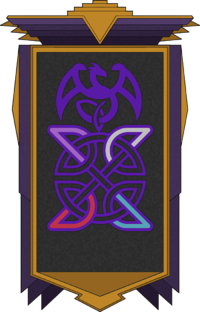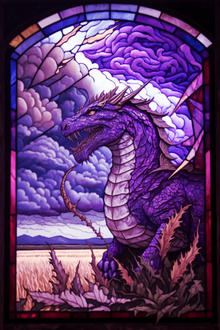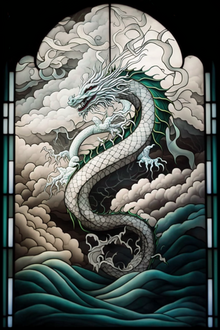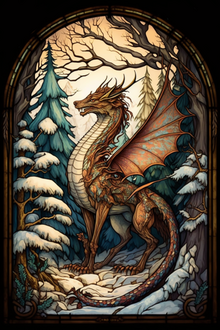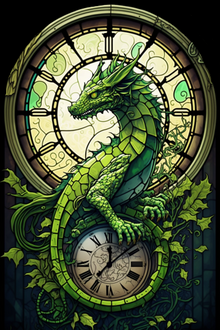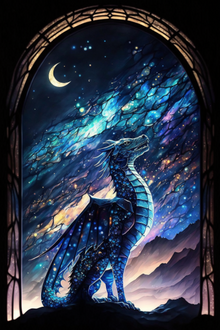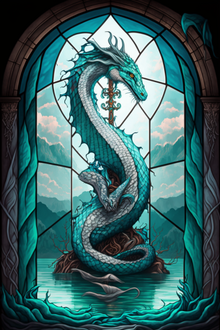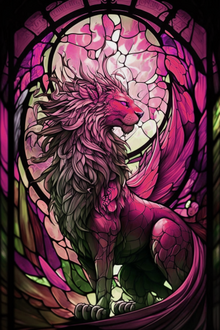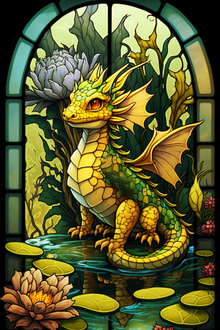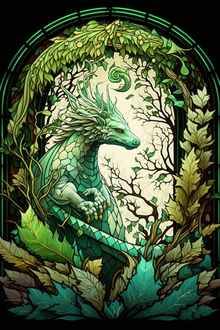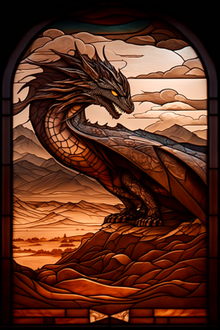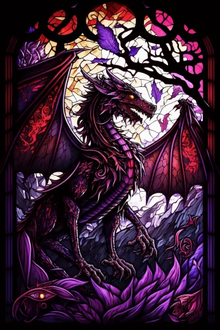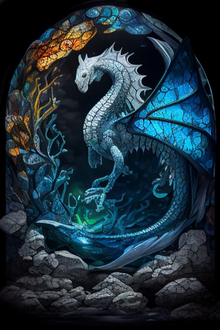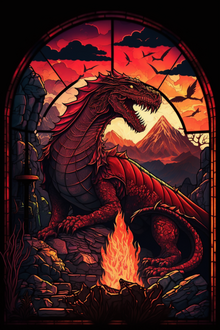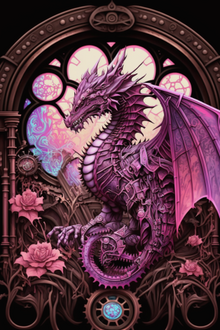Dragon Worship: Difference between revisions
No edit summary |
No edit summary |
||
| Line 3: | Line 3: | ||
|pronunciation = Dragon Worship | |pronunciation = Dragon Worship | ||
|origins = Unknown, presumed over 7000 years ago | |origins = Unknown, presumed over 7000 years ago | ||
|deities = Regulus, | |deities = Regulus, Yris, Marik, Palatino, Severena, Gaius, Caius, Triton, Aurora, Ballas, Armina, Nox, Zanobi | ||
|subsects = | |subsects = N/A | ||
|}} | |}} | ||
==Origins== | ==Origins== | ||
Dragon Worship or Dregodar is commonly believed to be the world’s oldest [[Religion]], one that is uniquely shared by many Races and potentially the most widely worshiped religion across the world, | Dragon Worship or Dregodar is commonly believed to be the world’s oldest [[Religion]], one that is uniquely shared by many Races and potentially the most widely worshiped religion across the world, though not the most numerous as it is outnumbered by Estellon and Unionism. Dregodar as a term is often used to refer to Dragon Worshipers, but the term itself comes from western-dominated historical review. After all, the Sihai pre-dated the creation of the Dregodar, and other subsects of Races worshiped Dragons at the same time, perhaps even more numerously than the Elves did. Elven historical telling however dominated the school of historical narration in the west, and as such, this term has become synonymous with it, literally translating to "people of the Dragons". Dragon Worship has undergone some changes over the millennia, and it is generally assumed that what is considered modern Dragon Worship, is nothing like older versions of Dragon Worship, as this religion changes radically with the times and needs of its worshipers. It is unique in the sense that Dragons have worked with and assisted the faithful, but never acted within their own capacity as gods, and occasionally even vocally rejected the idea of of their own divinity. Dragon Worship has more recently exploded back into the public eye, because of relaxing of religious laws, revealing just how pervasive and enduring Dragon Worship actually was, even in the very strongly Unionist Regalian Empire. Finally, it is very important to stress that while evidence exists that implies that Dragons are the true source of creation on Aloria that contradicts the narrative of other Religions, this information is easy to generalize and take out of context, and even the Dragons are quick to say that these things are more nuanced. Dragon worship is not the only ontologically correct Religion, all other Religions are equally as valid, even if Dragon Worshipers can sometimes appeal to a sense of smug superiority in a deeper world understanding. | ||
==Core Identity== | ==Core Identity== | ||
Dragon Worship is a | Dragon Worship is not a traditional Religion with tenets per se, though some of the faithful do find the idea of styling their own life goals, ambitions, and virtues after those of the Dragons. The primary theme of Dragon Worship is preservation of life, or more specifically the cycle of life. To Dragon Worshipers, life itself is the purest expression of spiritual existence, and an act directly ordained by their Gods, the Dragons, who they see as the creators of everything. In the views of Dragon Worshipers, Dragons create life, and are directly responsible for creating all the Races on Aloria, as well as shaping the terrain and circumstances in which these Races live. Their mission for life extends itself as such as a defense against Void Invasions historically speaking, but also the wider issue of Occult mutations and corruptions in creation. To Dragon Worshipers, creation made by Dragons is perfection, and the Occult is a poison that ruins and destroys that perfection and turns creation into abomination. It is important to note that the preservation of life is applied selectively and not whole-sale against any form of death. For example, diseases are "natural" to Aloria, as is the free will used to murder someone, and as such, these forms of death are considered part of the cycle of life, and giving birth to future souls yet unborn. It's important to stress that not all Dragon Worshipers see the duty to life as an ordained mission to stop any and all death, but rather that they selectively decide what types of death are part of the cycle of rebirth, and which ones are corruption, which more often than not tilts against the favor of the Occult. Even within Dragon Worship, there are three sub-pantheons, which have different general ideas of how to deal with the occult. The Vestige Faction believes that the Occult is a terrible corruption on the world, but that violence against the Occult should not compromise the preservation of life, and that as such, letting the Occult live out their lives and containing future spreading is the preferred method. The Benign Faction believes that the Occult is terrible, but that the responsibility for dealing with the negative after effects fall entirely on creation itself, and that there is no divine mission to purge it from the world, instead focusing on the natural tasks of the world that Dragons must continue to maintain. The final faction is the Cleansing Faction, which believes cleansing fire is the only solution to burn out the Occult from the world and return it to a pure state from before the first Void Invasion, to burn away all the things that were not made by design, and disregard the collateral damage and death inflicted while doing so. Unlike other Religions Dragon Worship does not have a traditional concept of Vices and Virtues, though many do style themselves after the enlightened intellect of Dragons as role models. Dragon Worship does have an afterlife, which is the Soul Rivers controlled by Armina. | ||
== | ==Worship== | ||
Worship among Dragon Worshipers is complicated to pin down, because there is no single adopted method of actively worshiping a Dragon or praying to them. Many Dragon Worshipers perform whatever ritual, custom, or habit that they are personally comfortable with. Some have tapestries depicting the Dragons, others have statues, and others yet only symbolize the dragons on a necklace. Worship can occur in groups or on an individual basis, and there is no real "book" on how to perform worship or how to be a good believer. The only real structure that exists in Dragon Worship, is that each Dragon Throne (a term used to define a Draconic leader and God) has a so-called Matron (which can be any gender) to represent their personal will among the people. These Matrons hold some high position in the faith, but also don't strictly have authority over the faithful, they just communicate the wishes of the Dragons and are as such considered respectable. Any person can become a Dragon Priest, being a Dragon Priest just involves understanding the ideologies and ideals of the Dragons, and being able to fulfill spiritual belief and desire among the faithful in group or individual settings. | |||
==Gods and Goddesses | =Dragon Pantheons= | ||
The Dragon Gods and Goddesses are divided over the three pantheons, the moderate Vestige Faction, the passive Benign Faction, and the violent Cleansing Faction. The Benign Faction does not concern itself with the Occult at all, professing instead the need to keep the natural processes of life and the world running. The Vestige Faction sees the Occult as a problem, but only wants to handle the problematic parts. The Cleansing Faction wants to purge all Occult related things and keep things in a state of purity. There is no official Dragon God King, however Regulus of the Crown Dragons is generally considered a mediator and speaker of the house of Dragons so to say, so his centrist proclamations tend to be followed by the other Dragons and Dragon Worshipers as a whole. Generally speaking, a worshiper will favor a specific faction, worship all the Dragons there-in, but proclaim one as their Patron-Dragon to favor above all others. | |||
=== | ==Vestige Faction Gods== | ||
===Regulus, Crown Dragon=== | |||
{| | {| | ||
|[[File: | |[[File:Regykysoru.png|220px|thumb|left]] | ||
| | | | ||
*'''Identity:''' | *'''Identity:''' Regulus is the Dragon God of leadership, the purple crown Dragon whose domain is the Regalian Archipelago, and whose primary element is lightning. | ||
*''' | * '''History:''' Regulus is strongly associated with Anglian Ailor, and the various pre-Empire tribes that used to exist in the Archipelago that specifically did not engage in Pagan Ailor worship. Regulus has long been a symbol of the Regalian Empire which took Dragons as a mythological emblem following the presumed death of Dragons. Regulus is remembered particularly fondly and fervently among Anglians, as well as the Crown Witches who served him. Regulus is remembered as a kind and favorable Dragon, who took pity on the suffering of the Anglian Ailor, and is credited for creating the humid fertile climate of Anglia. Regulus along with the other purple crown Dragons disappeared shortly before the Five Family Rebellion, without explanation or warning, leaving especially the Crown Witches without leadership. Modern historical insights have alluded to the idea that the purple crown Dragons made themselves mortal during the Denial of Immortality, and chose to live lives as Ailor instead, having their souls repeatedly re-incarnated in important political figures so as to help guide the trajectory of the Regalian Empire with their wisdom. Over time however, this self identity was lost, and it was presumed that the Dragonsouls became unaware of who they actually were in later generations. Regulus's soul was re-incarnated in Princeroyal Cedromar I Kade, which also represents a swivel in the direction of Draconic policy, with an active attempt to undo the Denial of Immortality and make Dragons immortal once more. More on him can be found on the [[Imperial Family]] page. | ||
* '''Relation:''' Regulus is considered the mediating force between all the other Dragons in what is known as the Dragon Conclave. Rather than an actual gathering and council among Dragons, the Conclave refers to the collective policies and ideas set forward by the Dragons to continue the existence of life across Aloria. Regulus is known to work well with Severena, Palatino, and Aurora, and frequently clashes with Caius. Triton and Regulus have some sort of collaboration, but the nature of it is not well understood, even by the Matrons. | |||
* '''Theme:''' Regulus is favored by rulers and leaders, his main virtues are wisdom, foresight, compromise, guidance, and mentorship to those in need. | |||
*''' | * '''Occult:''' Regulus is the chief architect of the benign neglect policy that preaches peaceful co-existence with the non-violent Occult, but purging of the violent ones. | ||
*''' | |||
*''' | |||
|} | |} | ||
=== | ===Severena, Dream Dragon=== | ||
{| | {| | ||
|[[File: | |[[File:Severenawht.png|220px|thumb|left]] | ||
| | | | ||
*'''Identity:''' | *'''Identity:''' Severena is the Dragon Goddess of Dreams, the white sky Dragon whose domain is that of the Far East, and whose primary element is wind and air. She is called Saaima in the Sihai language. | ||
*''' | * '''History:''' Severena is one of the few Dragons to survive the Denial of Immortality, an event in which the Dragons collectively decided that their guidance for creation had come to an end after the final defeat of the last Void Invasion, and that the mantle of creation should be passed to creation itself. Each Dragon applied a different outcome to this assumption of death, however Severena could not fully sever herself and her Dragons from the fate of the Sihai, who were still besieged by the Akula and other Demons. Instead of disappearing or perishing, Severena and the other White Dragons entered a near-death slumber which imprisoned their physical bodies in the Sihai Temples, but allowed their mind to continue directing the fate of the Sihai through dreams, creating the Jade Sea and the Jade Sea Wall to protect them from the ruinous forces of the Void and Exist beyond. Severena is unique in that she has taken a very strong and involved interest in the development of the Sihai (who she is also credited to having created), and out of all Dragons has shown the most direct guidance to their faithful while even expecting (though never demanding) loyalty and obedience in return. Severena's slumber is an ongoing topic of debate, because the Denial of Immortality implies she must wake, though it is assumed that if she does wake that the Jade Sea will melt, and that the Sihai lands will become vulnerable to the Akula and Demon attacks. | ||
* '''Relation:''' Severena is known to work well with Regulus, but generally shows a lack of interest in the wider world beyond the Sihai lands. Especially some faithful in the west of Vestige and Cleansing ideology have dismissed Severena as self-isolationist and blind to the dangers of the world while favoring only protection of the Sihai. Reality is obviously more complicated however, as she also uses her dreams to send out her followers into the wider world to make a difference during specific events across history. | |||
* '''Theme:''' Severena is favored by ritualists, warrior monks, and those seeking to preserve balance in the world and mediation between opposing ideologies and forces. | |||
* '''Occult:''' Severena is generally not in favor of the Occult, but considers any hostile action taken against the Occult not in self defense to be a betrayal of inner harmony and self value. | |||
*''' | |||
*''' | |||
*''' | |||
|} | |} | ||
=== | ===Valerius, Evolution Dragon=== | ||
{| | {| | ||
|[[File: | |[[File:Valeriusbrown.png|220px|thumb|left]] | ||
| | | | ||
*'''Identity:''' | *'''Identity:''' Valerius is the Dragon God of Evolution, the brown seasonal change Dragon whose domain is that of the Skags and the North Belt, as well as Jorrhildr. Their primary element is change. | ||
*''' | * '''History:''' Valerius is a mysterious Dragon who tries very hard to remain unseen, and unheard of. Many of the realms that Valerius controls are barely inhabited save for the Velheim colonists who arrived relatively late in the existence of the Allorn Empire. What Valerius did in the north prior to the Velheim arrival remains a mystery. Valerius is not a creator Dragon in and of themselves, they have not created any Races or species unlike other Dragons, but use their powers to iterate on the creation of others, which is technically against Dragon creation protocol, but Valerius gets away with it where Nox did not. Valerius is generally credited for having created the Oorl worms, and only interacts with Urlan in the wild forests of Jorrhildr from time to time. In fact, Valerius's existence was doubted for a very long time, until the memories shared by Oorl worms in Symbiosis kept revealing a recurring memory of a similar entity that was later identified as Valerius. When the Urlan became more wide-spread, Valerius was also seen more often, and eventually started interacting with the Urlan. There seems to be a general alarm among the Dragon Sites belonging to other Dragons over the idea that Urlan may at some point assimilate all of creation, though at the same time, none of the Dragons seem to be acting to prevent this, leading to some confusion over whether there is any cause for concern. It is unknown if Valerius died during the Denial of Immortality, or just hid away. Only recently has Valerius re-appeared, but only to occasionally communicate with the most isolated of tribes in Jorrhildr. | ||
* '''Relation:''' | |||
* '''Theme:''' Valerius is favored by Urlan, and by those seeking to overcome physical limitations and self-improve by any (non-Occult) means, including Markenism and Draconic Magic self-mutation. | |||
*''' | * '''Occult:''' Valerius's stance on the Occult is to disregard the ones that are alive today, but to change all of creation so they become incapable of being infected by the Occult in the future, thus causing the Occult to eventually die out from lacking a host to attach itself with in the future. | ||
*''' | |||
*''' | |||
|} | |} | ||
=== | ===Palatino, Time Dragon=== | ||
{| | {| | ||
|[[File: | |[[File:Emeraldtime.png|220px|thumb|left]] | ||
| | | | ||
*'''Identity:''' | *'''Identity:''' | ||
*''' | * '''History:''' | ||
*''' | * '''Relation:''' | ||
*''' | * '''Theme:''' | ||
*'''Occult:''' | * '''Occult:''' | ||
|} | |} | ||
===Caius, The | |||
==Benign Faction Gods== | |||
===Aurora, Creation Dragon=== | |||
{| | |||
|[[File:Aurorablue.png|220px|thumb|left]] | |||
| | |||
*'''Identity:''' Aurora is the Dragon Goddess of Creation, the blue genesis Dragon whose domain is that of the old Sundered lands and Teled Methen, and whose primary element is stars. | |||
* '''History:''' Aurora is not the only Dragon capable of creating sentient life (as all Dragons can, and have done so), but she is generally considered the most powerful of them and the one with the most amount of insight in the creation of new life. Aurora is currently in a unique situation in that her domain lies around Teled Methen, but she currently resides in Ellador, in the realm of Palatino, where the new Crater of Creation lies. Aurora's main function in the cycle of Creation is to experiment with viable designs of animal life, and as such she is also considered the Dragon Goddess of animals and the animal kingdom. It is said that in her craters, she experiments with hundreds of thousands of animals who may yet fail to produce a viable species and die after one generation, or live on to be placed around the world in a tightly controlled eco system by her design. Aurora was closely related to the Dregodar Dragon Worship cult of Elves during the Allorn Empire, and fled north with them during the Elven attacks against the Dragons. There, supposedly, she was killed in battle against the Dwarves and became an Undead Dragon named Frisit. It was discovered recently that this was actually an Ordial entity from the Beyond masquerading as Aurora, using her corpse to control the Isldar into becoming agents of death. Since her revival, the Isldar underwent a civil war, which has only recently ended leaving the race divided and Aurora supported by the Life Isldar. Aurora elected to stay in Ellador, creating a new Crater of Creation in Ellador from where she creates new life. | |||
* '''Relation:''' Aurora works well with Regulus, but is in general indifferent to the causes of all other Dragons. Her foremost priority has always been the maintenance of a carefully balanced ecosystem of animals across the world, and her absence has done much damage with new species coming into existence or old ones going extinct without her careful balance in place to prevent deviance. She actively dismisses the idea of doing anything about the Occult, because her work is so much more important to preserving life on Aloria. | |||
* '''Theme:''' Aurora is favored by alchemists and scientists who explore the boundaries of creation, life, metamorphosis and death, but also analysts and silent watchers and historians. | |||
* '''Occult:''' Aurora is indifferent to the Occult, considering them a problem, but having no time to even think about them while she deals with the balance of life on Aloria. | |||
|} | |||
===Nox, Mirror Dragon=== | |||
{| | |||
|[[File:Tealdr.png|220px|thumb|left]] | |||
| | |||
*'''Identity:''' Nox is the Dragon God of Deception, the aquamarine mind Dragon whose domain is the smallest of all Dragons, surrounding Sassrakkand, and whose primary element is illusions. | |||
* '''History:''' Nox is a mysterious Dragon in the sense that he is barely understood by the wider worshiping community, save for the Slizzar, who in turn hide much of his history from the other faithful. Nox is credited as being the Dragon who created the Slizzar, and treated them as his personal agents. Nox is generally seen as distrustful even to the other Dragons, as the Slizzar were supposedly never ordained to be created, or were created with powers beyond what Dragons thought reasonable for creation, namely shapeshifting. There is even a historical implication that Nox's domain was once much larger, but that Ballas and Zanobi were granted much of Nox's domain as punishment for Nox's transgressions of Creation. In the same vein however, the Dragons thought themselves too enlightened to put the Slizzar to death for being a false creation, and as such, Nox and the Slizzar continued to exist, and have perhaps existed as the oldest unchanged Race of Aloria. It is even implied by the Slizzar that this was by Nox's design, because Nox's low profile has allowed him to interfere and sometimes even sabotage the work of other Dragons without them even noticing. Nox is credited for having created the vast anti-Magic shields that are found in particular locations across the world like Sassrakkanand and Regalia, but many of his designs are unknown. Nox's disappearance is largely shrouded in mystery followin the Denial of Immortality, though it is generally accepted that he split his soul in parts, and imbued them into the Anindriya Slizzar, to continue his work. | |||
* '''Relation:''' Nox is disliked by nearly all other Dragons save for Zanobi, who seems more like a caretaker and jailor for Nox than an actual friend. Nox is considered a punished Dragon and as such, he is considered very weak as most of his Dragon Magic and influence was severed. What he lost in direct influence however, was more than made up for in his Slizzar followers that continue to work by his designs. | |||
* '''Theme:''' Nox is favored by shapeshifters, rogues, thieves, deceivers, liars, and generally those who wish for the wit and silver tongue ability to get their way. | |||
* '''Occult:''' Nox is perhaps considered the most pro-Occult of all Dragons save for Zanobi, but not in a benign way, in fact in quite a malicious way. Nox favors using the Occult for his own designs, he is indifferent to letting them live or killing them, but actively wants to keep many of them as pets or tools to get his way. | |||
|} | |||
===Armina, Soul Dragon=== | |||
{| | |||
|[[File:Magentadr.png|220px|thumb|left]] | |||
| | |||
*'''Identity:''' Armina is the Dragon Goddess of Souls, the magenta soul river warden whose domain is that of the Suvial and Kathar lands, but also the global Soul Rivers. Her primary element is Life. | |||
* '''History:''' Armina as a Dragon was not worshiped before the arrival of the Suvial to the Firelands. Armina is one of the so-called Court Dragons, which defines a set of Dragons who exist and fulfill functions but don't have any wider societal connection to warrant being worshiped by any particular group of people, like the Rubine and Mauvais Dragons. Armina however was thrust into relevancy when the Suvial forerunners were expelled from the Allorn Empire because of the Estelsoor schism. While the majority of them upheld their faith in Estelsoor, a minority of them and later Maquixtl exiles ended up forming a cult around Armina, who thus became a Dragon Worship Goddess. Armina however is shy or unwilling to interact with creation, chiefly concerning themselves with the preservation of her domain, being the Soul Rivers. It is believed that Armina controls Dragon Worship afterlife, and regulates the process that involves the creation of new souls for those who are yet to be born. She had some sort of collaboration with Avinla, in a unique turn of events, seeing a Dragon Worship entity and a Goddess from a different religion create a symbiotic collaboration in the Suvial homeland. Her disappearance is largely a mystery, nobody knows when or how it occurred. | |||
* '''Relation:''' Armina interacted very little with other Dragons, and mostly interacted with Avinla in the Suvial homeland, and Caius by extension of Avinla, though the two differed on their preferred strategies with regards to the Occult considerably. | |||
* '''Theme:''' Armina is favored by those who want to actively find cooperative arrangements with the Occult and create a new world in which they have a role and function instead of trespassing. | |||
* '''Occult:''' Armina is very much against the death inflicted by the Occult, but also seen as capable of incorporating Occult lives into a new vision of the future, though only by her dictations. | |||
|} | |||
===Zanobi, Magic Dragon=== | |||
{| | |||
|[[File:Yellowdragossn.png|220px|thumb|left]] | |||
| | |||
*'''Identity:''' Zanobi is the Dragon Goddess of magic, the yellow dancing Dragon whose domain is that of Hadar and the surrounding isles, except for Sassrakkand. Her primary element is water. | |||
* '''History:''' Zanobi's history is hard to track down, because her small appearance (it was said Zanobi was as large as a domestic cat) and generally quirky and playful behavior, as well as her inability to speak, made her generally come across as more animal-like than god-like. Zanobi however is the source of all Dragon Magic, and perhaps even the most powerful Dragon of all where all sources of Dragon Magic come from, and all powers granted to Archon originate as she borrows a fraction of her power to the other Dragon Thrones. Zanobi only really started being historically seen when the Allar fled from Sendrass to Hadar, where she took an immediate interest in helping and guide them. The yellow water Dragons became a cultural fixture among the Allar, until the time when a strange magical disease struck the yellow water Dragons. The whole of the Allar Race fought a battle against time to find a cure, averting all of their alchemical research to solving the ailment that was troubling their patrons, however they failed to find a cure in time and the yellow water Dragons perished. This historical event caused a severe trauma for the Allar Race as a whole, one that they still haven't fully processed even as the yellow water Dragons were revived by Regulus and the Dragon Conclave in their efforts to revert the denial of immortality. | |||
* '''Relation:''' Zanobi is generally well liked by all Dragons, save for Triton, Caius, and Marik. Zanobi and the yellow water Dragons are considered the playful and social glue between the other Dragons that can sometimes soothe conflict with comedy that Regulus is unable to end with words. | |||
* '''Theme:''' Zanobi is favored by Dragon Mages, but also those who wish to make the lives of others better, appeal to kindness, entertainers, circus actors and artists and musicians. | |||
* '''Occult:''' Zanobi has a very unique take on the Occult. She wants to convert them all to Dragon Magic, and is actively attempting to solve the problem of Soul Infection from Void and Exist Magic, as of yet with no results. Her intent, unlike that of Nox, seems to be genuinely born out of kindness, believing that the Occult infestation is not anyone's fault, and that it is the responsibility of the Dragons to cure and integrate it into the natural world instead of just exterminating it. | |||
|} | |||
===Ballas, Nature Dragon=== | |||
{| | {| | ||
|[[File: | |[[File:Greendragon.png|220px|thumb|left]] | ||
| | | | ||
*'''Identity:''' | *'''Identity:''' | ||
*''' | * '''History:''' | ||
* '''Relation:''' | |||
* '''Theme:''' | |||
*''' | * '''Occult:''' | ||
*''' | |||
*''' | |||
|} | |} | ||
=== | ==Cleansing Faction Gods== | ||
===Marik, Soldier Dragon=== | |||
{| | {| | ||
|[[File: | |[[File:Bronzedr.png|220px|thumb|left]] | ||
| | | | ||
*'''Identity:''' | *'''Identity:''' Marik is the Dragon God of Warriors, the bronze soldier Dragon whose domain is that of Farah'deen, and whose primary element is the shifting desert sands and metals. | ||
*''' | * '''History:''' Marik's history is hard to review, especially records during the Sariyd times, as the historical telling of the Bronze Dragons is always tainted by historical revisionism. The Qadir benefit from depicting Marik as a cruel and evil Dragon, while the Songaskian view of their patron God is always more beneficial and serene than reality implies. What is known, is that Marik always served as a front-line Dragon for the Draconic cause against the Occult. While most other Dragons acted like commanders, working through their agents and indirectly, Marik and the Bronze Dragons were known to actively take up fighting against the Occult and could often be seen during Void Invasions holding back vast armies of Demons. At some point in history, the Bronze Dragons starting attacking the Sariyd, and these attacks eventually culminated into the Great Storm when the Bronze Dragons perished, and the Songaskian Race was born while most of the Sariyd suffocated in the desert sands, eventually becoming the Qadir. Reviving the Bronze Dragons seems very complicated right now. Dragon Scholars have speculated that in order to revive the Bronze Dragons, all Songaskians would have to die or have their consciousness merged to re-form Marik and his Dragons, which is an action the Dragon Conclave does not seem willing to take. | ||
* '''Relation:''' Marik, Triton, Yris, and Caius are called the "Dragon Aspects of War", with Caius representing the General, Marik the Soldier, and Triton the Commander, and Yris the logistician. These four Dragons chiefly fought the war against the Occult over the millennia, while having some disdain towards the other Dragons for not doing more. | |||
* '''Theme:''' Marik is favored by warriors, fighters and soldiers, but also by those who seek any form of fame and skill in fighting whether for entertainment, art, or personal wealth. | |||
* '''Occult:''' Marik has an intense hatred for the Occult, Ordial in particular, but has been known to accept or tolerate Occult who pledge their life and soul to the cause of the Cleansing Faction. | |||
*''' | |||
*''' | |||
*''' | |||
|} | |} | ||
=== | ===Triton, Command Dragon=== | ||
{| | {| | ||
|[[File: | |[[File:Void dragon.png|220px|thumb|left]] | ||
| | | | ||
*'''Identity:''' | *'''Identity:''' Triton is the Dragon God of Command, the black agitator Dragon whose domain is that of Sendrass, and whose primary element is mind-control and subjugation. Triton is a God in multiple religions, as he became trapped in the Void and became a Void God called Ifrit the Darkscale. For more information about the [[Void Worship]] interpretation, consult that Page. It is not possible to worship Ifrit and Triton at the same time, as the Void Worship interpretation has some contradicting ideological stances. | ||
* '''History:''' Triton was denied a long history on Aloria, as he "died" over 70,000 years ago. When the first Void Invasion was in full swing, Triton, Marik, Yris and Caius made battle with the Demons. After several centuries of being unable to make meaningful progress and losing ground with the Seraph, Triton led a charge directly into the Void dimension, while Yris led a charge directly into the Exist dimension, both Dragons not understanding these Dimensions and invertedly becoming trapped within them (though Yris would later break out). Triton has been trapped in the Void ever since, but managed to slowly bend parts of the Void to his will to become a Void God himself, and also be able to indirectly affect Aloria. Being trapped in the Void has changed Triton, who remains part of the Cleansing Faction, but has some unique views on the uses of the Void. | |||
*''' | * '''Relation:''' Marik, Triton, Yris, and Caius are called the "Dragon Aspects of War", with Caius representing the General, Marik the Soldier, and Triton the Commander, and Yris the logistician. These four Dragons chiefly fought the war against the Occult over the millennia, while having some disdain towards the other Dragons for not doing more. | ||
* '''Theme:''' Triton is favored by Void Mages, Darkscale Archon, commanders, and those who wish to spread their power by creating a large network of subjects and servants to serve their will. | |||
*''' | * '''Occult:''' Triton has a unique bend on the Cleansing Faction's ideology. It remains true that Triton wants to cleanse the unwanted infection of Aloria, but his preferred method is to first enslave the Void to do the work for them, while fully subjugating the other Dimensions through a war in heaven, and by absolute conquest. Triton believes that everything Occult that can be chained to serve the Dragons and mind controlled into obedience can be spared, while everything that resists should be purged. | ||
*''' | |||
*''' | |||
|} | |} | ||
=== | ===Yris, Deep Dragon=== | ||
{| | {| | ||
|[[File: | |[[File:Deepsdragon.png|220px|thumb|left]] | ||
| | | | ||
*'''Identity:''' | *'''Identity:''' | ||
*''' | * '''History:''' | ||
*''' | * '''Relation:''' | ||
*''' | * '''Theme:''' | ||
*'''Occult:''' | * '''Occult:''' | ||
|} | |} | ||
=== | ===Caius, Destruction Dragon=== | ||
{| | {| | ||
|[[File: | |[[File:Caiusred.png|220px|thumb|left]] | ||
| | | | ||
*'''Identity:''' | *'''Identity:''' | ||
*''' | * '''History:''' | ||
*''' | * '''Relation:''' | ||
*''' | * '''Theme:''' | ||
*'''Occult:''' | * '''Occult:''' | ||
|} | |} | ||
===Gaius, Artificer | ===Gaius, Artificer Dragon=== | ||
{| | {| | ||
|[[File: | |[[File:Pinkdragon.png|220px|thumb|left]] | ||
| | | | ||
*''' | *'''Identity:''' | ||
* '''History:''' | |||
* '''Relation:''' | |||
* '''Theme:''' | |||
* '''Occult:''' | |||
|} | |} | ||
Revision as of 15:57, 9 February 2023
Origins
Dragon Worship or Dregodar is commonly believed to be the world’s oldest Religion, one that is uniquely shared by many Races and potentially the most widely worshiped religion across the world, though not the most numerous as it is outnumbered by Estellon and Unionism. Dregodar as a term is often used to refer to Dragon Worshipers, but the term itself comes from western-dominated historical review. After all, the Sihai pre-dated the creation of the Dregodar, and other subsects of Races worshiped Dragons at the same time, perhaps even more numerously than the Elves did. Elven historical telling however dominated the school of historical narration in the west, and as such, this term has become synonymous with it, literally translating to "people of the Dragons". Dragon Worship has undergone some changes over the millennia, and it is generally assumed that what is considered modern Dragon Worship, is nothing like older versions of Dragon Worship, as this religion changes radically with the times and needs of its worshipers. It is unique in the sense that Dragons have worked with and assisted the faithful, but never acted within their own capacity as gods, and occasionally even vocally rejected the idea of of their own divinity. Dragon Worship has more recently exploded back into the public eye, because of relaxing of religious laws, revealing just how pervasive and enduring Dragon Worship actually was, even in the very strongly Unionist Regalian Empire. Finally, it is very important to stress that while evidence exists that implies that Dragons are the true source of creation on Aloria that contradicts the narrative of other Religions, this information is easy to generalize and take out of context, and even the Dragons are quick to say that these things are more nuanced. Dragon worship is not the only ontologically correct Religion, all other Religions are equally as valid, even if Dragon Worshipers can sometimes appeal to a sense of smug superiority in a deeper world understanding.
Core Identity
Dragon Worship is not a traditional Religion with tenets per se, though some of the faithful do find the idea of styling their own life goals, ambitions, and virtues after those of the Dragons. The primary theme of Dragon Worship is preservation of life, or more specifically the cycle of life. To Dragon Worshipers, life itself is the purest expression of spiritual existence, and an act directly ordained by their Gods, the Dragons, who they see as the creators of everything. In the views of Dragon Worshipers, Dragons create life, and are directly responsible for creating all the Races on Aloria, as well as shaping the terrain and circumstances in which these Races live. Their mission for life extends itself as such as a defense against Void Invasions historically speaking, but also the wider issue of Occult mutations and corruptions in creation. To Dragon Worshipers, creation made by Dragons is perfection, and the Occult is a poison that ruins and destroys that perfection and turns creation into abomination. It is important to note that the preservation of life is applied selectively and not whole-sale against any form of death. For example, diseases are "natural" to Aloria, as is the free will used to murder someone, and as such, these forms of death are considered part of the cycle of life, and giving birth to future souls yet unborn. It's important to stress that not all Dragon Worshipers see the duty to life as an ordained mission to stop any and all death, but rather that they selectively decide what types of death are part of the cycle of rebirth, and which ones are corruption, which more often than not tilts against the favor of the Occult. Even within Dragon Worship, there are three sub-pantheons, which have different general ideas of how to deal with the occult. The Vestige Faction believes that the Occult is a terrible corruption on the world, but that violence against the Occult should not compromise the preservation of life, and that as such, letting the Occult live out their lives and containing future spreading is the preferred method. The Benign Faction believes that the Occult is terrible, but that the responsibility for dealing with the negative after effects fall entirely on creation itself, and that there is no divine mission to purge it from the world, instead focusing on the natural tasks of the world that Dragons must continue to maintain. The final faction is the Cleansing Faction, which believes cleansing fire is the only solution to burn out the Occult from the world and return it to a pure state from before the first Void Invasion, to burn away all the things that were not made by design, and disregard the collateral damage and death inflicted while doing so. Unlike other Religions Dragon Worship does not have a traditional concept of Vices and Virtues, though many do style themselves after the enlightened intellect of Dragons as role models. Dragon Worship does have an afterlife, which is the Soul Rivers controlled by Armina.
Worship
Worship among Dragon Worshipers is complicated to pin down, because there is no single adopted method of actively worshiping a Dragon or praying to them. Many Dragon Worshipers perform whatever ritual, custom, or habit that they are personally comfortable with. Some have tapestries depicting the Dragons, others have statues, and others yet only symbolize the dragons on a necklace. Worship can occur in groups or on an individual basis, and there is no real "book" on how to perform worship or how to be a good believer. The only real structure that exists in Dragon Worship, is that each Dragon Throne (a term used to define a Draconic leader and God) has a so-called Matron (which can be any gender) to represent their personal will among the people. These Matrons hold some high position in the faith, but also don't strictly have authority over the faithful, they just communicate the wishes of the Dragons and are as such considered respectable. Any person can become a Dragon Priest, being a Dragon Priest just involves understanding the ideologies and ideals of the Dragons, and being able to fulfill spiritual belief and desire among the faithful in group or individual settings.
Dragon Pantheons
The Dragon Gods and Goddesses are divided over the three pantheons, the moderate Vestige Faction, the passive Benign Faction, and the violent Cleansing Faction. The Benign Faction does not concern itself with the Occult at all, professing instead the need to keep the natural processes of life and the world running. The Vestige Faction sees the Occult as a problem, but only wants to handle the problematic parts. The Cleansing Faction wants to purge all Occult related things and keep things in a state of purity. There is no official Dragon God King, however Regulus of the Crown Dragons is generally considered a mediator and speaker of the house of Dragons so to say, so his centrist proclamations tend to be followed by the other Dragons and Dragon Worshipers as a whole. Generally speaking, a worshiper will favor a specific faction, worship all the Dragons there-in, but proclaim one as their Patron-Dragon to favor above all others.
Vestige Faction Gods
Regulus, Crown Dragon
|
Severena, Dream Dragon
|
Valerius, Evolution Dragon
|
Palatino, Time Dragon
|
Benign Faction Gods
Aurora, Creation Dragon
|
Nox, Mirror Dragon
|
Armina, Soul Dragon
|
Zanobi, Magic Dragon
|
Ballas, Nature Dragon
|
Cleansing Faction Gods
Marik, Soldier Dragon
|
Triton, Command Dragon
|
Yris, Deep Dragon
|
Caius, Destruction Dragon
|
Gaius, Artificer Dragon
|
Trivia
- Dragon Worshipers can change their preferred Dragon Throne, but tend to generally stick with one for their entire lives. Changing a Throne is not seen as something shameful, but continually doing it over and over is. It is also considered shameful if it is done on a whim, as opposed to a major life event.
- It is sometimes believed that Dragon Worship is compatible with Emended Unionism because Regulus being Cedromar is also a God in that pantheon, however this is not the case. Emended Unionism has some views about the Occult that are incompatible with Dragon Worship, and also generally prescribes to a more dogmatic life than Dragon Worshipers would tolerate. There may however be friendly relations between the two religions, which can be seen in Anglia where Regulus worshiping Isldar and Ailor live side by side with Emended Ailor.
- Infantilization or imitation of Dragons where not part of racial Abilities is considered taboo among the Dragon Worshipers. Imitation through mutations of Draconic features however is considered flattery. Dragons are however immensely offended, if their worshipers keep mini-dragon-like creatures as pets. Any religion would find this grossly offensive.
| ||||||||||
